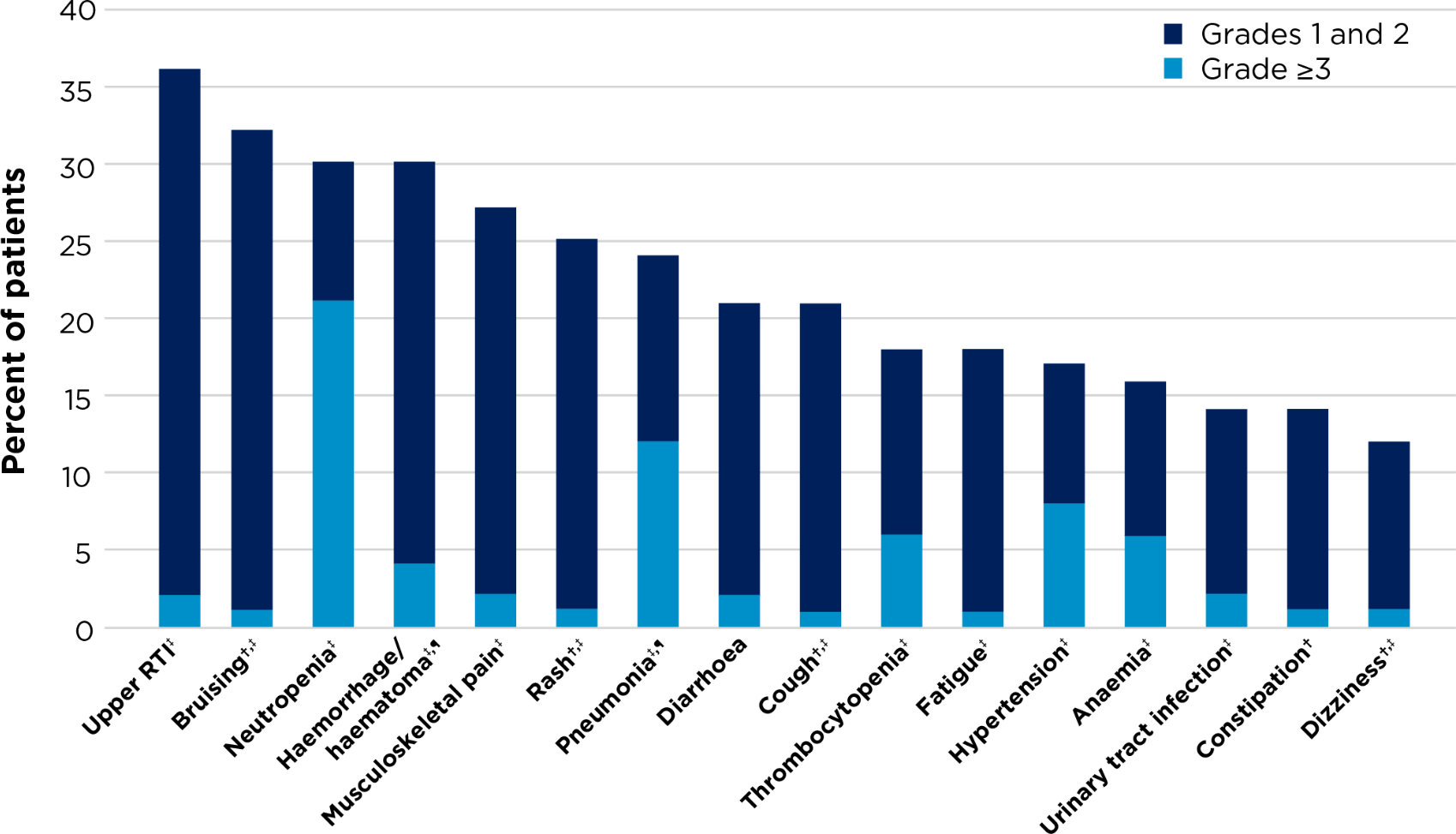-
No dose modification for patients aged ≥65 years, or with mild-to-moderate impairment of kidney function or liver function1
- No dose modification is needed for patients with mild-to-moderate renal impairment (creatinine clearance (CrCl) ≥ 30 mL/min, estimated by Cockcroft-Gault).
- No dose modification is needed for patients with mild (Child-Pugh class A) or moderate (Child-Pugh class B) hepatic impairment.
- Patients with severe kidney impairment, patients requiring dialysis, and patients with severe hepatic impairment should be monitored for adverse reactions. Although the safety of BRUKINSA has not been evaluated in patients with severe hepatic impairment, there is no caution to avoid use in these patients; dose modification is recommended.
-
Simple dose adjustment for co-administration with strong or moderate CYP3A inhibitors.
Avoid co-administration with strong and moderate CYP3A inducers. Co-administration with mild CYP3A inducers should be done with caution1 - For 3 to 7 days pre- and post-surgery, consider the benefit-risk of withholding BRUKINSA depending upon the type of surgery and the risk of bleeding1
Recommended dose modification for Grade ≥3 adverse reactions1
| Starting dose | 1st occurrence | 2nd occurrence | 3rd occurrence | 4th occurrence |
|---|---|---|---|---|
| Start at a total dose of 320 mg (four 80 mg capsules) | Interrupt BRUKINSA treatment. Resume treatment once toxicity has returned to grade ≤1 or baseline | Discontinue | ||
| No dose change | Reduce to a total dose of 160 mg | Reduce to a total dose of 80 mg | ||
|
Take once 



am/pm |




am/pm |


am/pm |

Once daily |
Discontinue |
| OR | ||||
|
Take twice 

am 

pm |


am 

pm |

am 
pm |
 Once daily
Once daily
|
Discontinue |

Grade ≥3 adverse reactions
- Grade 3 or higher non-haematological toxicities
- Grade 3 febrile neutropenia
- Grade 3 thrombocytopenia with significant bleeding
- Grade 4 neutropenia (lasting more than 10 consecutive days)
- Grade 4 thrombocytopenia (lasting more than 10 consecutive days)

